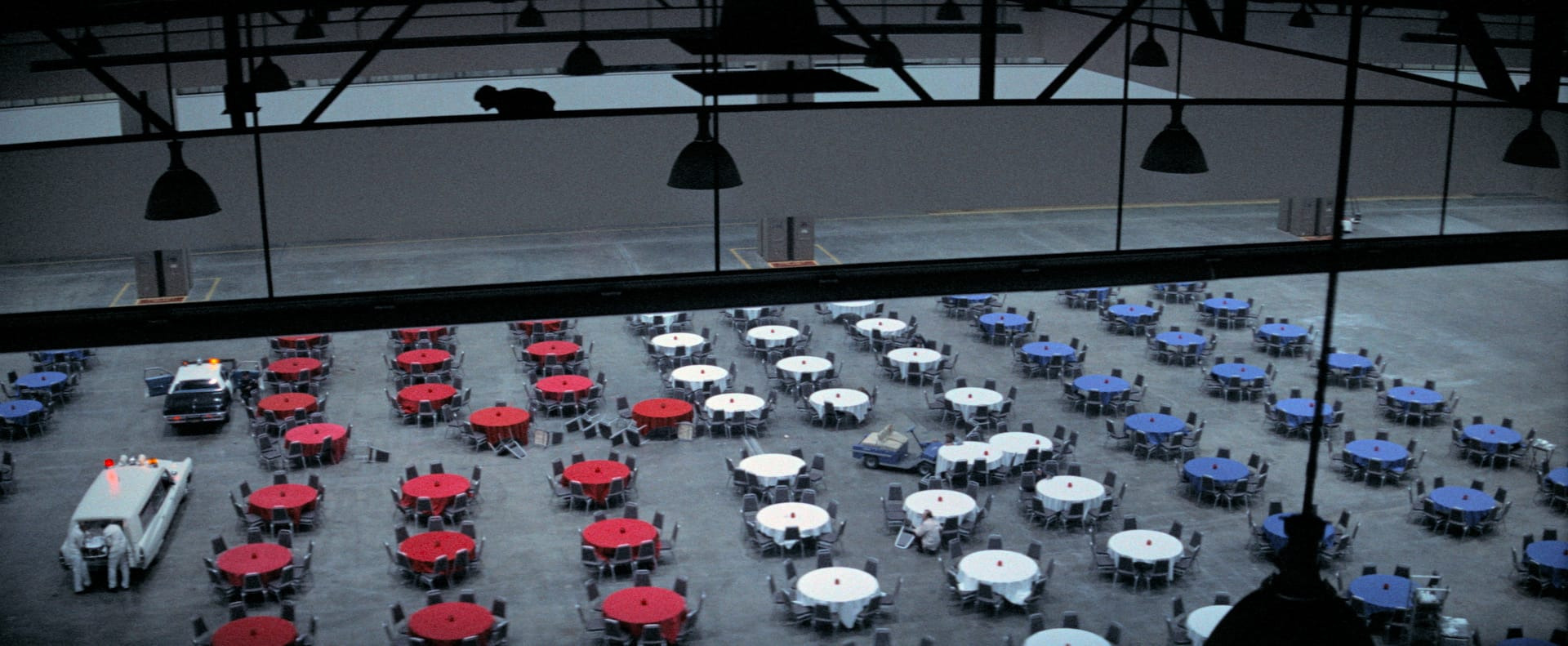The Parallax View: Dark Towers

The Parallax View: Dark Towers
What does parallax mean? It is a term that English speakers are perpetually learning and always forgetting. Leopold Bloom, in Ulysses: “Parallax. I never exactly understood . . . Par it’s Greek: parallel, parallax.” In the technical sense, the word refers to the changes in an object’s apparent position depending on where you stand. Practically, it is the reason why, walking down the beach in parallel to a huge, quick-moving ship on the horizon, you can appear to keep pace with it—at least for a while.
In The Parallax View, a 1974 conspiracy thriller by the director Alan J. Pakula, parallax is a stand-in for one man’s effort to head off a machine of uncertain dimensions and power. The movie opens with the assassination of a senator inside Seattle’s Space Needle, on the Fourth of July. Our protagonist, a contumacious newspaper reporter named Joe Frady (Warren Beatty, as shaggy as he’ll ever be), failed to make it past security that day, but his sometime girlfriend Lee (Paula Prentiss) was there, and observed the crime from the rear. Three years later, she comes to him with news that all the nearby witnesses but her and one other man have died. She’s afraid, she tells Frady. Before long, she dies too. So Frady, aflame with journalistic initiative, sets off to investigate a string of deaths that almost no one else considers strange. His inquiry leads him to something called the Parallax Corporation, a mysterious organization that does dirty work while trading in illusions worthy of its name.
If this setup sounds fairly conventional, the thriller that follows is not. Pakula, who died in 1998 after a career spanning four decades, is less a household name than many of his movies. Yet he had a strong reputation as a producer even before becoming a director, his producing work across the sixties having traced an intensifying line of social conscience. When he came into his own as a filmmaker, it was as a stylist with an eye for social menace and power. Klute (1971), his second film as a director, left a visible mark on Francis Ford Coppola’s The Conversation (1974), and along with The Parallax View and All the President’s Men (1976), it forms what’s often called Pakula’s Paranoia Trilogy: three movies that, with their portraits of amorphous conspiracy, helped to carry the anxiety of the unbridled seventies onto the screen. The Parallax View, adapted from a novel by Loren Singer, stands out in the group for its rangy and eclectic plot, and, just as much, for its disenchanted-seeming worldview, which governs nearly every shot.
“The camera’s point of view, under Pakula’s direction, becomes less cinematic than human—it feels like a bystander.”
A Pakula frame is carefully, often ingeniously, composed. There is not a lot of coverage in his editing. (“Put the camera there and let the scene show itself,” Dustin Hoffman has recalled him saying on the set of All the President’s Men. “You don’t have to cut to a close-up, back and forth.”) The result is that the camera’s point of view, under Pakula’s direction, becomes less cinematic than human—it feels like a bystander. His pacing, often slightly offbeat, adds to this subjective effect.
A typical example comes early in The Parallax View, when Frady argues with a gaggle of police officers at the station. Suddenly, we’re close up on his face, heavily shadowed, as he looks down, looks away, stops speaking, looks away, looks back—the camera lingering on his face all the while, a little longer than we expect, as if helping us to clock something about Frady. What is the camera noticing? This is a Pakula moment, and it is typical of his approach that we, as viewers, register the unsettled attention even if we do not note the curious framing. Then the energy breaks, Frady swivels off, and the camera pulls back into a two-shot, so that the scene can go on.







